The Queen’s Likeness: Portraits of Elizabeth I
NATIONAL PORTRAIT GALLERY
Cornelis Ketel in England 1573-1581
Ao. 1578. conterfeytte Ketel de Coninginne van Engelandt nae t'leven: haer Majesteyt sat te ghevalle van den hoogh gheboren Graef van Hertfort, op t'huys te Hantworth, daer sy by d'Hertoginne van Sommersit, Moeder des selven Graefs, ten eten was.
Ketel quickly established himself as a successful painter of portraits in London. Karel van Mander records that Ketel was patronized by the prosperous German Hansa merchants of the Steelyard and that a Force overcome by Wisdom and Prudence commissioned from him and presented to Sir Christopher Hatton introduced him to court circles. Hatton commissioned a portrait and Queen Elizabeth I sat to him in 1578
The biographer Karel van Mander notes his portrait of Sir Christopher Hatton of the Earl of Oxford, and various noblemen, their wives and children. In 1578, permission was granted for a portrait of Queen Elizabeth, when on a visit to Anne Seymour, Duchess of Somerset at Hanworth Park House in Middlesex.
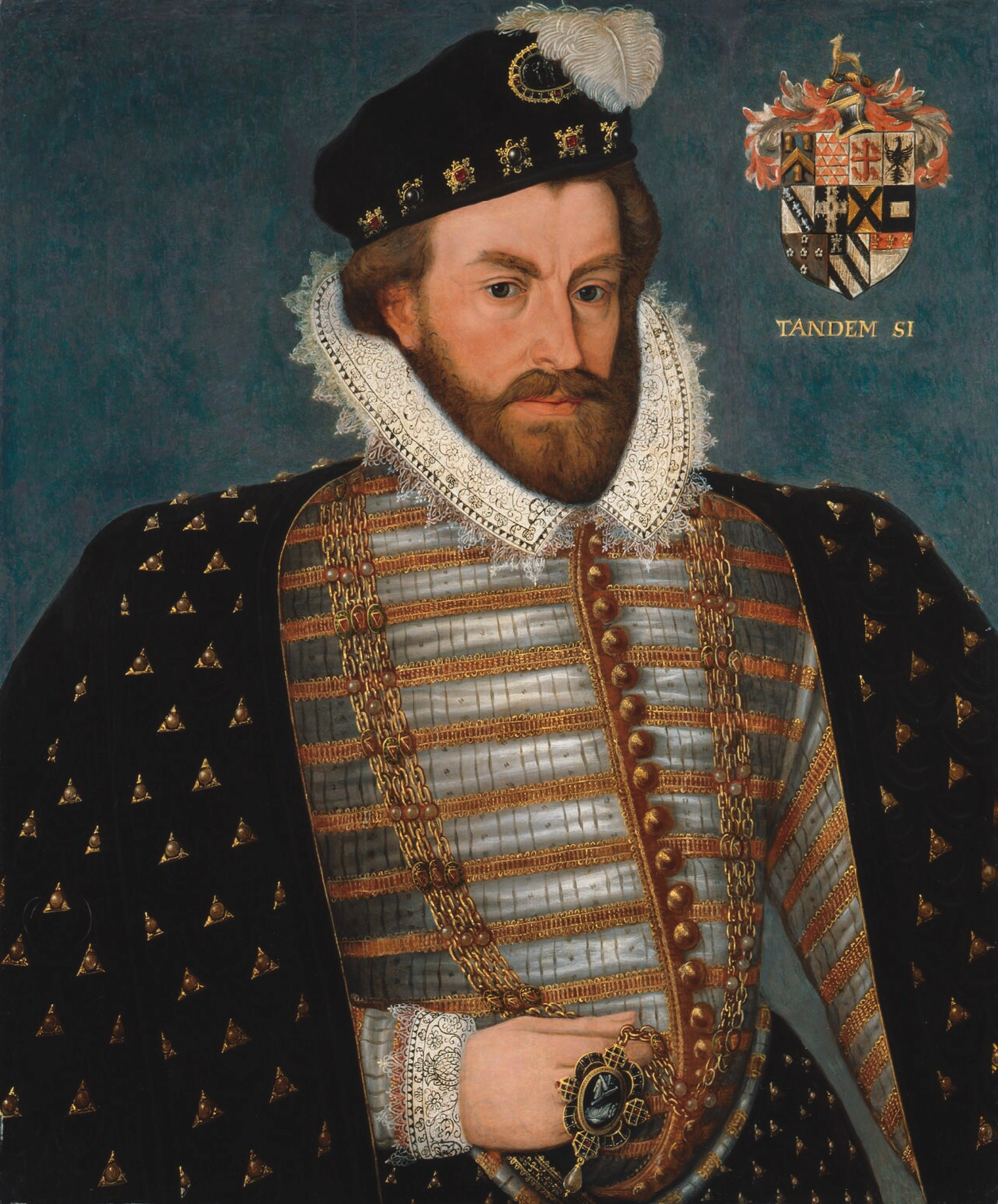
Sir Christopher Hatton, by unknown artist
oil on panel, probably 17th century, based on a work of 1589
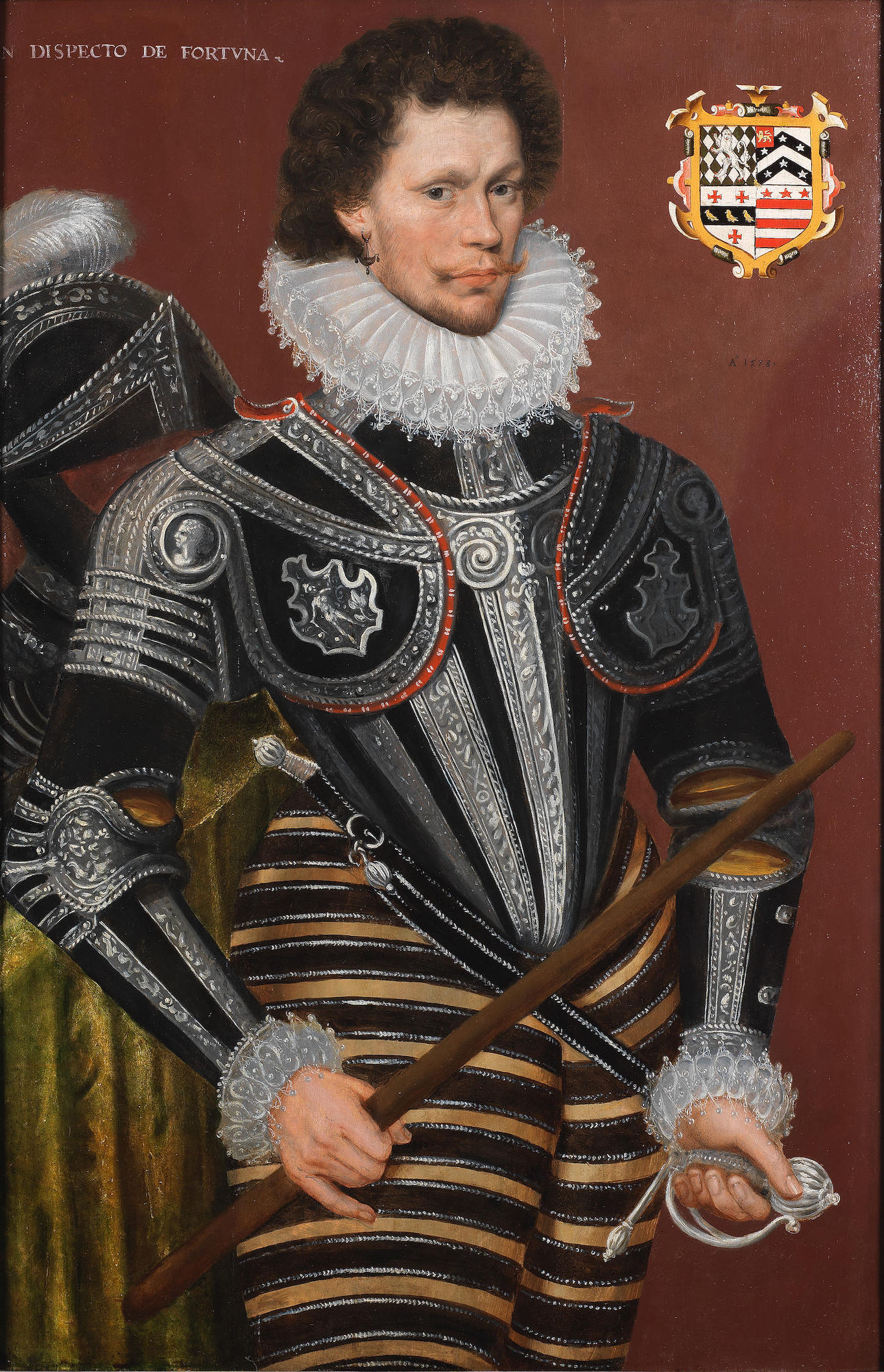
Attributed to Cornelis Ketel
Portrait of Sir George Gill of Wyddial Hall, Hertfordshire, three-quarter- armour, 1578
oil on panel
Painting
108.4 x 69.9cm
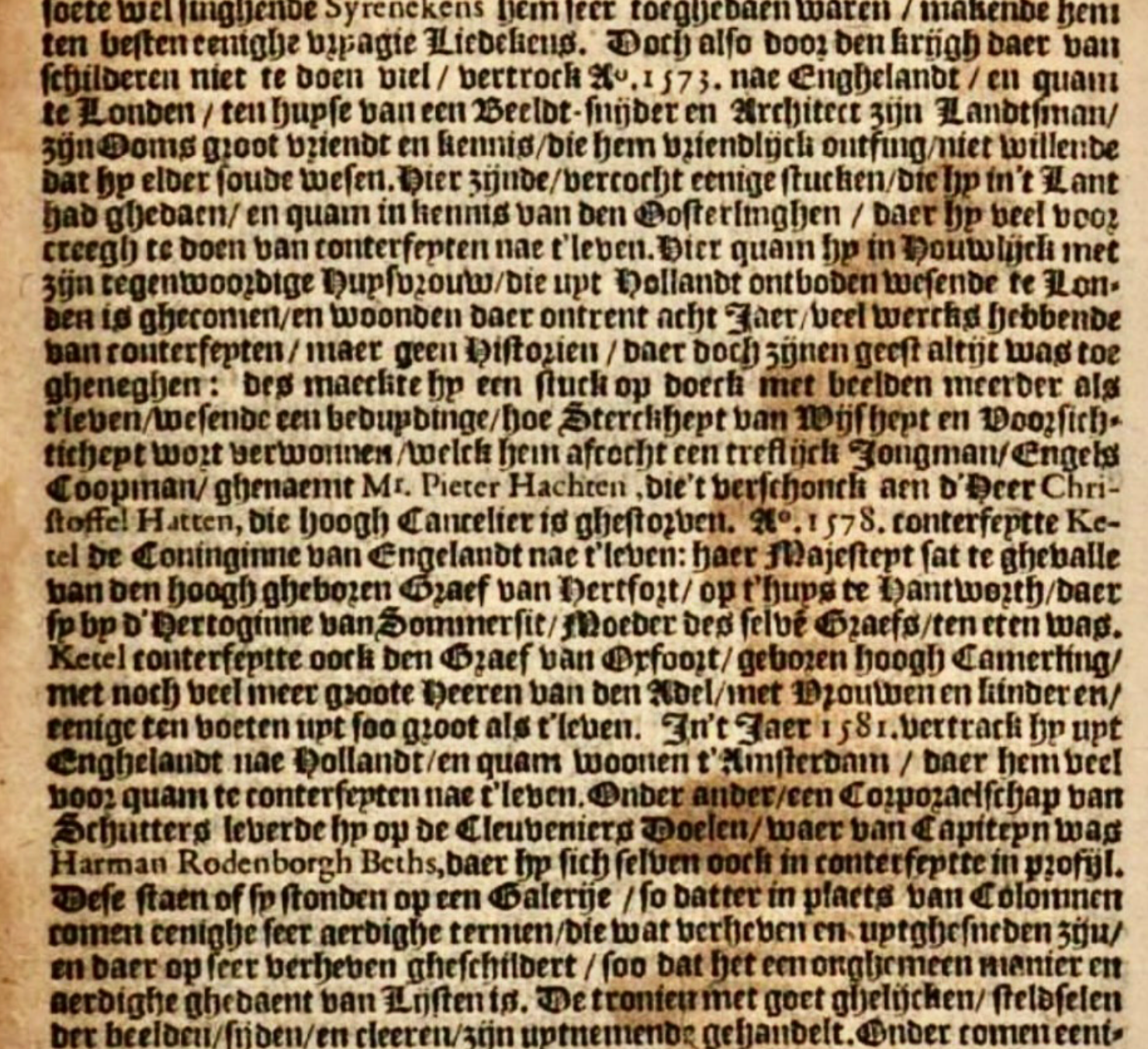
Hier quam hy in Houwlijck met zijn tegenwoordige Huysvrouw, die uyt Hollandt ontboden wesende te Londen is ghecomen, en woonden daer ontrent acht Iaer, veel wercks hebbende van conterfeyten, maer geen Historien, daer doch zijnen geest altijt was toe gheneghen: des maeckte hy een stuck op doeck met beelden meerder als t'leven, wesende een beduydinge, hoe Sterckheyt van Wijsheyt en Voorsichticheyt wort verwonnen, welck hem afcocht een treflijck Iongman, Engels Coopman, ghenaemt Mr. Pieter Hachten, die't verschonck aen d'Heer Christoffel Hatten, die hoogh Cancelier is ghestorven. Ao. 1578. conterfeytte Ketel de Coninginne van Engelandt nae t'leven: haer Majesteyt sat te ghevalle van den hoogh gheboren Graef van Hertfort, op t'huys te Hantworth, daer sy by d'Hertoginne van Sommersit, Moeder des selven Graefs, ten eten was. Ketel conterfeytte oock den Graef van Oxfoort, geboren hoogh Camerling, met noch veel meer groote Heeren van den Adel, met Vrouwen en kinderen, eenige ten voeten uyt soo groot als t'leven. In't Iaer 1581. vertrack hy uyt Enghelandt nae Hollandt, en quam woonen t'Amsterdam, daer hem veel voor quam te conterfeyten nae t'leven. Onder ander, een Corporaelschap van Schutters leverde hy op de Cleuveniers Doelen, waer van Capiteyn was Harman Rodenborgh Beths, daer hy sich selven oock in conterfeytte in profijl. Dese staen of sy stonden op een Galerije, so datter in plaets van Colomnen comen eenighe seer aerdighe termen, die wat verheven en uytghesneden zijn, en daer op seer verheven gheschildert, soo dat het een onghemeen manier en aerdighe ghedaent van Lijsten is. De tronien met goet ghelijcken, steldselen der beelden, sijden, en cleeren, zijn uytnemende gehandelt. Onder comen eenighe sinnekens van wit en swart, en twee staende Figueren, als van Coper, wesende Mars en Vulcanus. Hier by om den sin te verstaen heeft hy dusch ghedicht ghevoeght:
Portrait of queen Elizabeth I, c. 1575 - INFO NATIONAL PORTRAIT GALLERY
The ‘Darnley portrait’, c. 1575
The analysis indicates that the picture may have been painted by a Netherlandish artist, perhaps one visiting England for a short period.
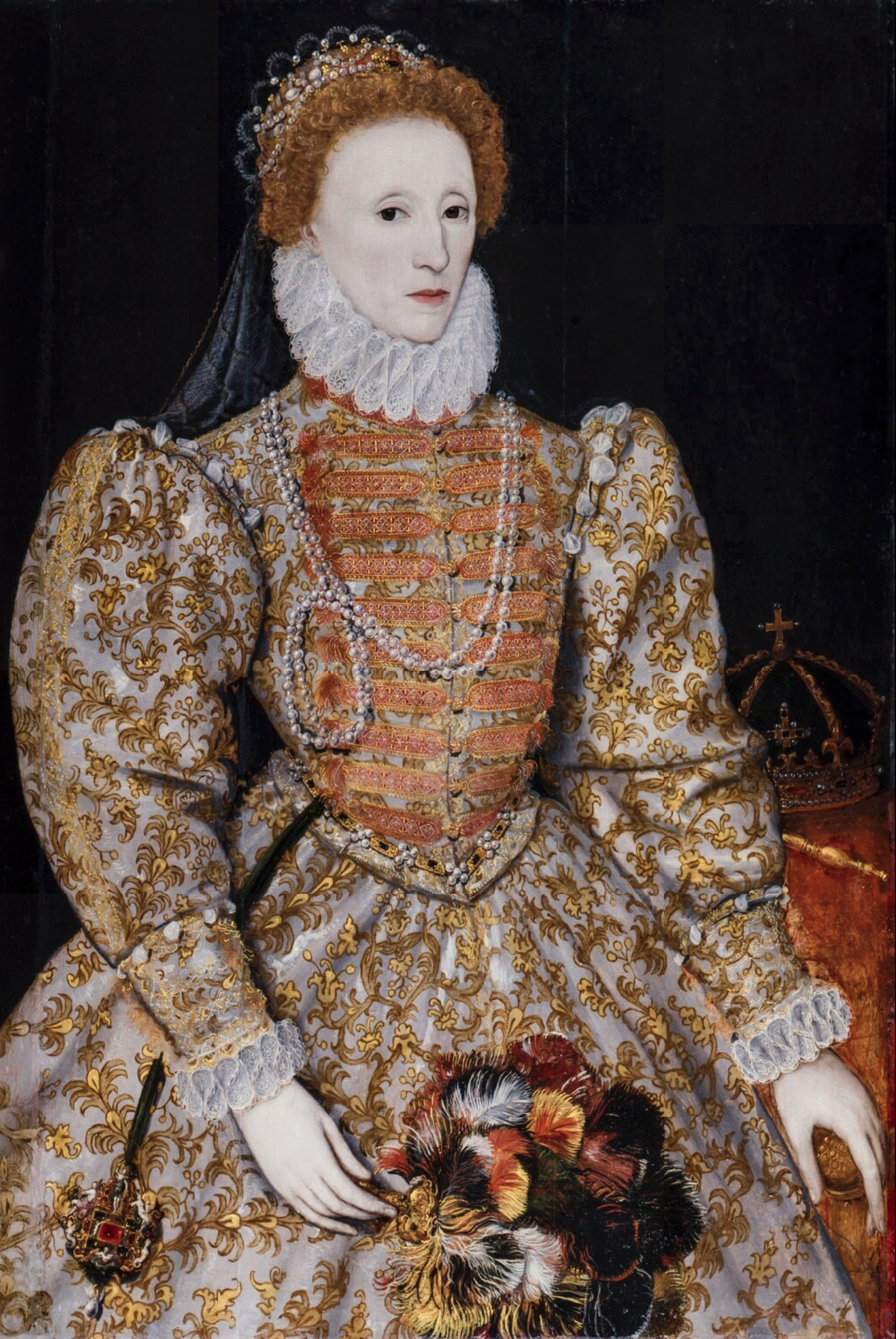
Queen Elizabeth I
oil on panel, circa 1575
44 1/2 in. x 31 in. (1130 mm x 787 mm)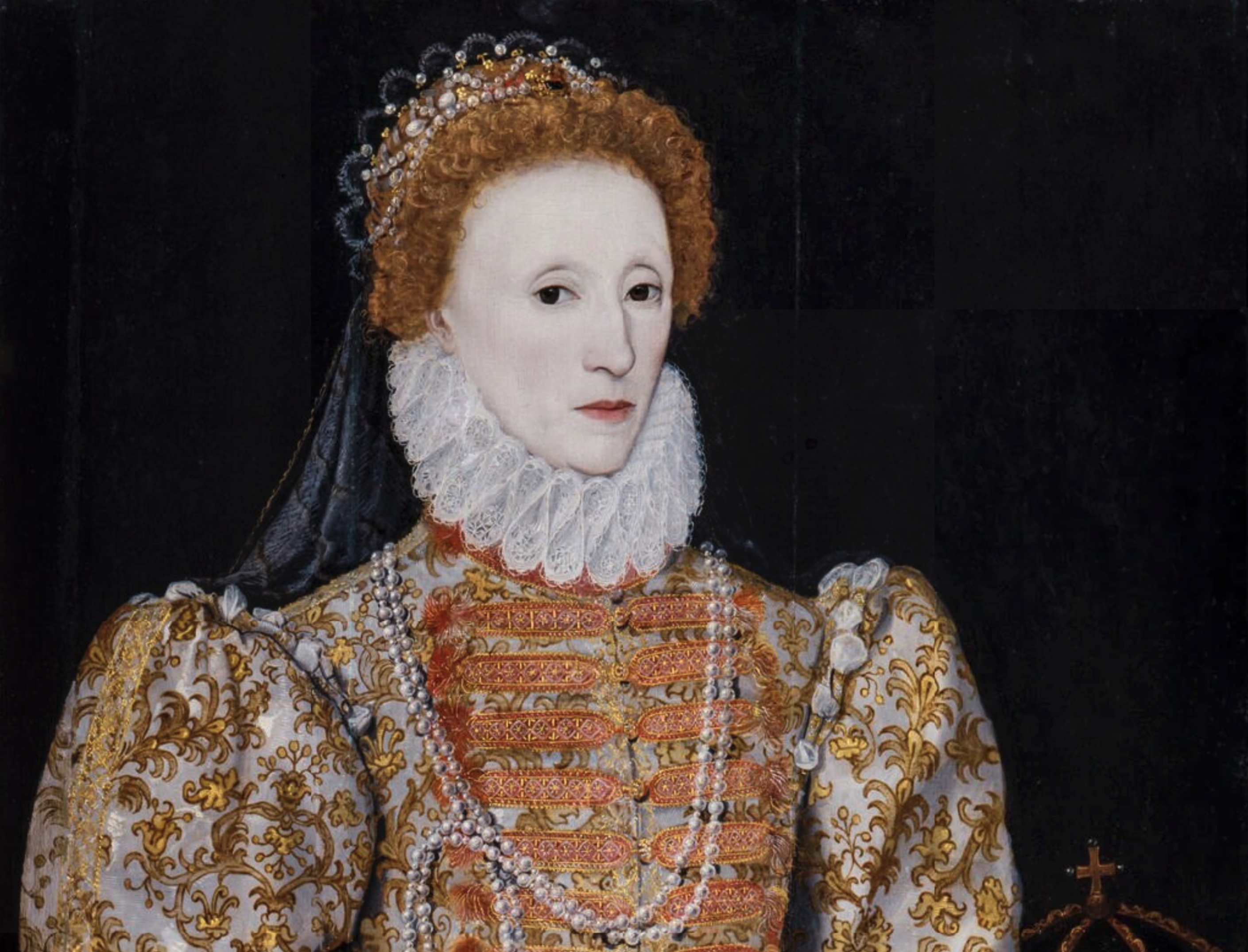
Style and method
The analysis indicates that the picture may have been painted by a Netherlandish artist, perhaps one visiting England for a short period. Most of the painting seems to have been carried out by a single artist who worked rapidly and confidently. However, the crown on the table to the right is by another artist and appears to have been added at a very late stage.
Analysis of the underdrawing has confirmed that part of this portrait was drawn freehand. A number of changes were made to the original design both in the drawing and painting stages. The position of the fan was altered during the painting process; it was originally smaller and positioned slightly higher, and the outline of a handle was drawn in but never painted.
The ‘Darnley portrait’, c. 1575
This remarkable painting is known as the ‘Darnley portrait’ after a previous owner and is one of the most important surviving portraits of Elizabeth I. It was almost certainly painted from life and the resulting pattern for the queen’s face was regularly reused for the remainder of her reign. It is likely that it was commissioned by a courtier close to the queen and it is possible that the pendant or the fan may have been a gift from that individual. It was the custom for courtiers and members of the nobility to give the queen gifts at New Year; Elizabeth’s favourite, the Earl of Leicester, gave the queen a fan at New Year 1573–4 and there are records of various other fans that were given to her around that time. However, none of the descriptions exactly match the fan in this portrait.
The colours in this portrait have changed significantly over time. Analysis has shown that Elizabeth’s extremely pale complexion would originally have been much rosier as the reds in the flesh paint have faded. The common assumption that Elizabeth always had very pale features appears to be a myth; however, it is known that in the later part of her reign she wore pale make-up.
The whole painting would have once been much more vibrant. For example, the embroidery on the queen’s dress would have appeared far richer and the edges of the golden brown pattern may have originally been a reddish purple. This colour change has been caused by the instability of the blue pigment ‘smalt’ as well as the fading of red lake.
 Foundation Musick's Monument
Foundation Musick's Monument